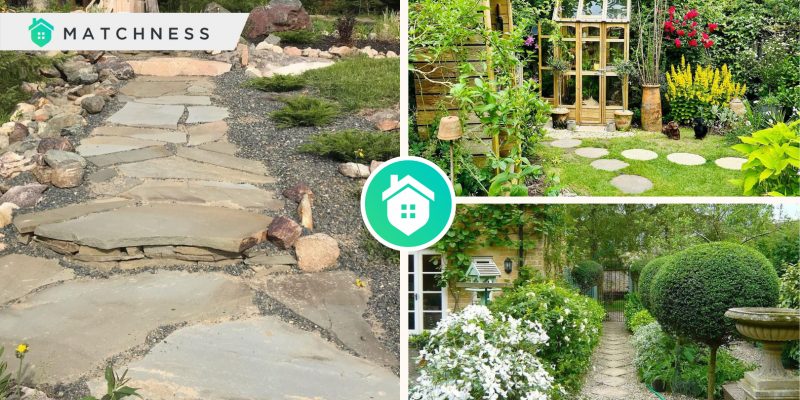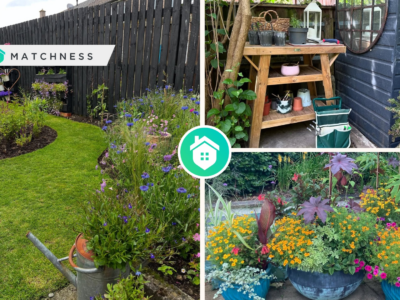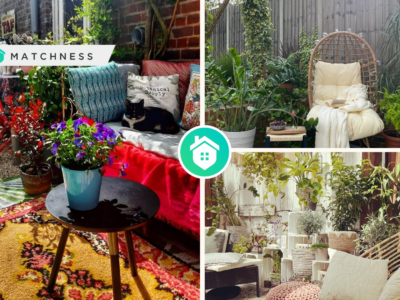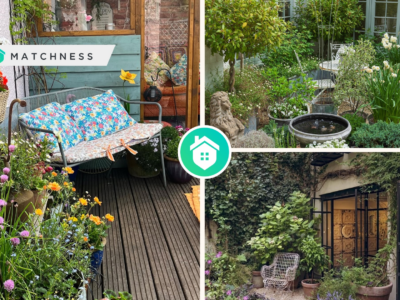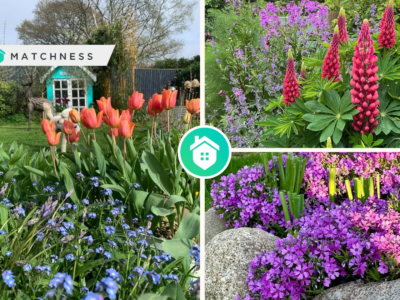A well-designed garden pathway serves as more than a means of connecting different areas of your landscape. It creates a sense of flow, provides structure, and adds visual interest, enhancing the beauty and accessibility of your outdoor space. Whether winding through a lush green garden or leading to a quiet corner for reflection, pathways can transform a simple yard into a charming retreat. With the variety of materials, styles, and techniques available, designing a garden pathway that fits your space and aesthetic preferences is more achievable than ever. This article explores some creative tips, types, and design ideas for crafting pathways that harmonize with any garden setting.

Planning the Path: Understanding Purpose and Layout
Before beginning the process of creating a garden pathway, it’s important to have a clear vision of its purpose and placement. Paths may serve different functions, from guiding guests through ornamental flower beds to providing a direct route across a lawn, or simply linking various garden zones, like vegetable plots, seating areas, or fountains.
Key Considerations in Planning
- Define the Functionality: Understand whether the pathway is for leisurely strolls, practical movement, or a combination. Functional paths like main walkways should be direct and spacious, while garden trails can be narrower and winding, giving a more scenic, relaxed feel.
- Visualize the Flow: Think about the path’s integration with existing landscape features, like trees, shrubs, and water elements. It should harmonize with the surroundings rather than cutting across them abruptly.
- Scale and Width: The pathway’s width will depend on its intended use. Primary paths benefit from being around 4 feet wide to accommodate two people walking side-by-side, while secondary or decorative pathways can be as narrow as 2 feet, allowing for a more intimate exploration.
Selecting Pathway Materials
The choice of materials can significantly impact the overall look, feel, and function of a garden pathway. Each material brings its own advantages and challenges, which need to be balanced according to budget, style preferences, and maintenance needs.
Popular Pathway Materials
- Gravel: One of the most versatile and affordable options, gravel provides a rustic, natural look that suits casual garden styles. It’s simple to install and allows for water drainage, but it may require maintenance to keep weeds at bay and ensure gravel stays in place.
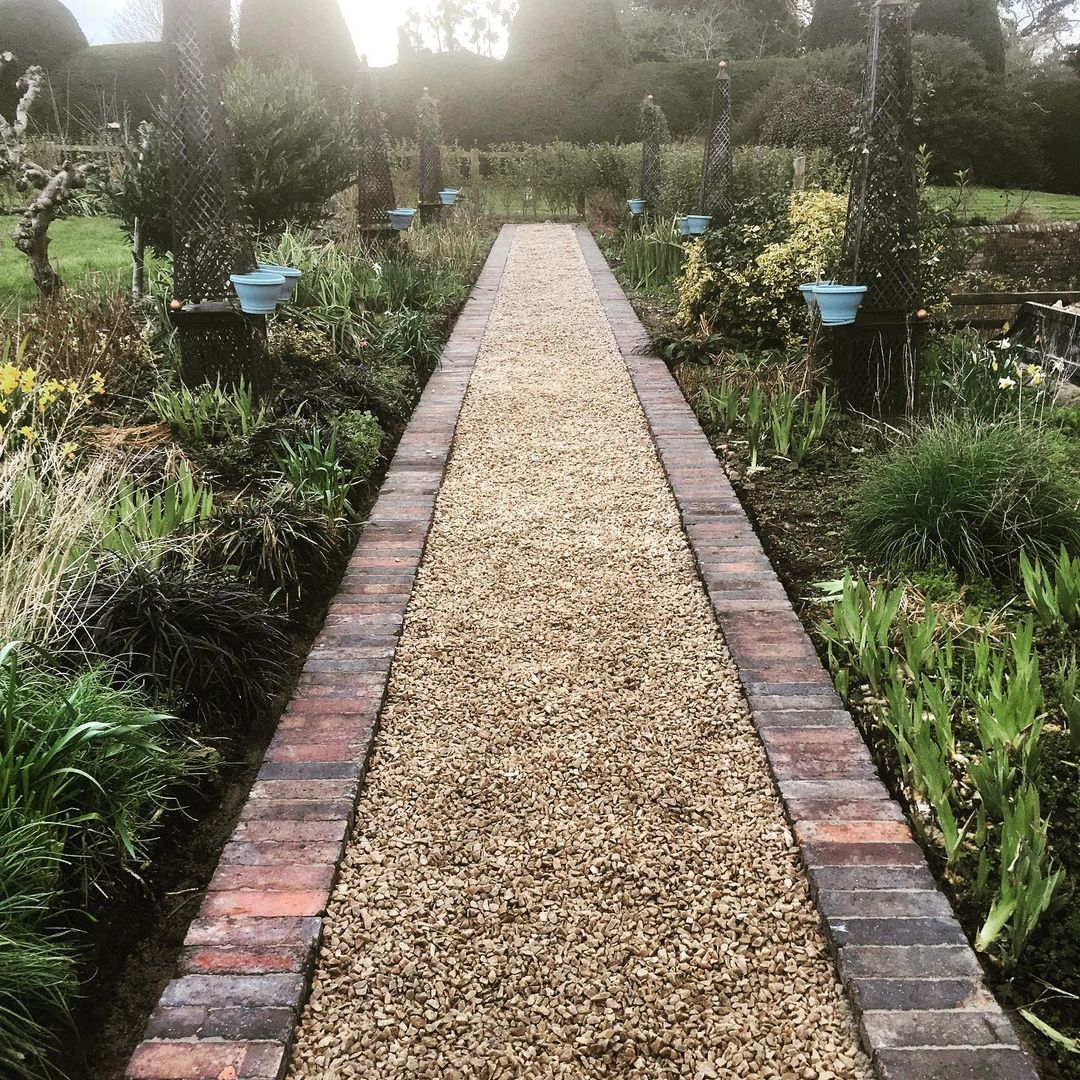
This gravel pathway is edging with brick and surrounded by low plants. The contrast between the rough gravel and smooth brick creates a visually appealing border for the pathway. The low plants add a touch of greenery without overshadowing the pathway’s design. Gravel pathway from @janos_heder_landscaping
- Flagstone: Known for its timeless elegance, flagstone is available in different shapes and colors, making it adaptable to various garden styles. Flagstone pathways are durable, stable, and slip-resistant, ideal for areas with heavy foot traffic.

Combining flagstone pathways with rock edging creates a natural and rustic look to your outdoor space. The contrast between the smooth flagstones and rough rocks adds visual interest and texture to the landscape. Flagstone path from @zone3gardens
- Brick: This classic option offers a warm, inviting look suitable for traditional garden themes. Brick paths are durable and easy to repair, though they can be prone to moss and require occasional cleaning to maintain their appearance.
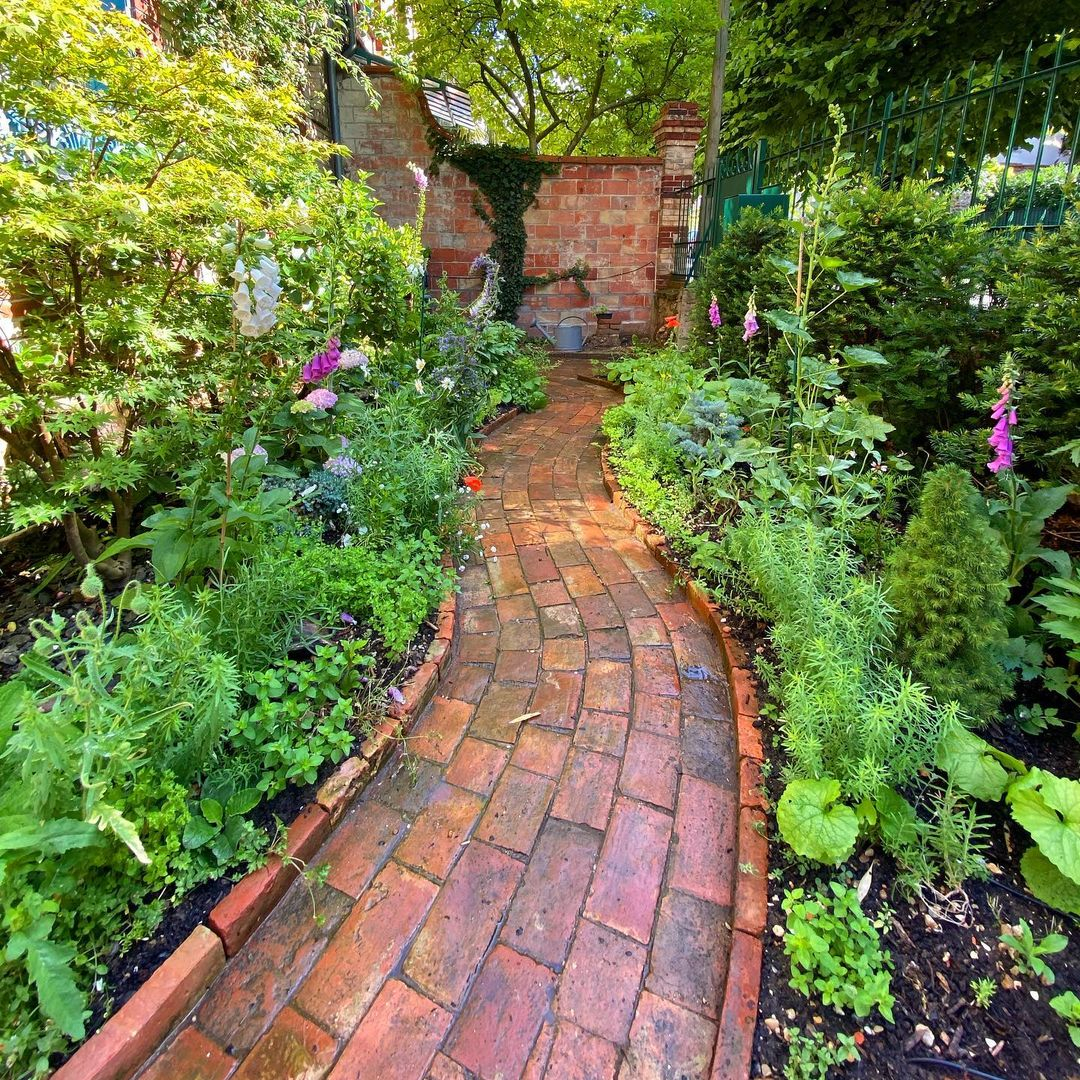
Brick pathways will bring a touch of charm and elegance to your outdoor space. It is a durable and low-maintenance option that can withstand heavy foot traffic for years to come. Brick garden path from @the.green.realm
- Wooden Planks: For gardens with a natural or coastal theme, wooden planks provide an organic feel and are particularly effective for paths over grassy or moist areas. However, wood can become slippery in wet conditions and may require sealing or regular maintenance to prevent rot.
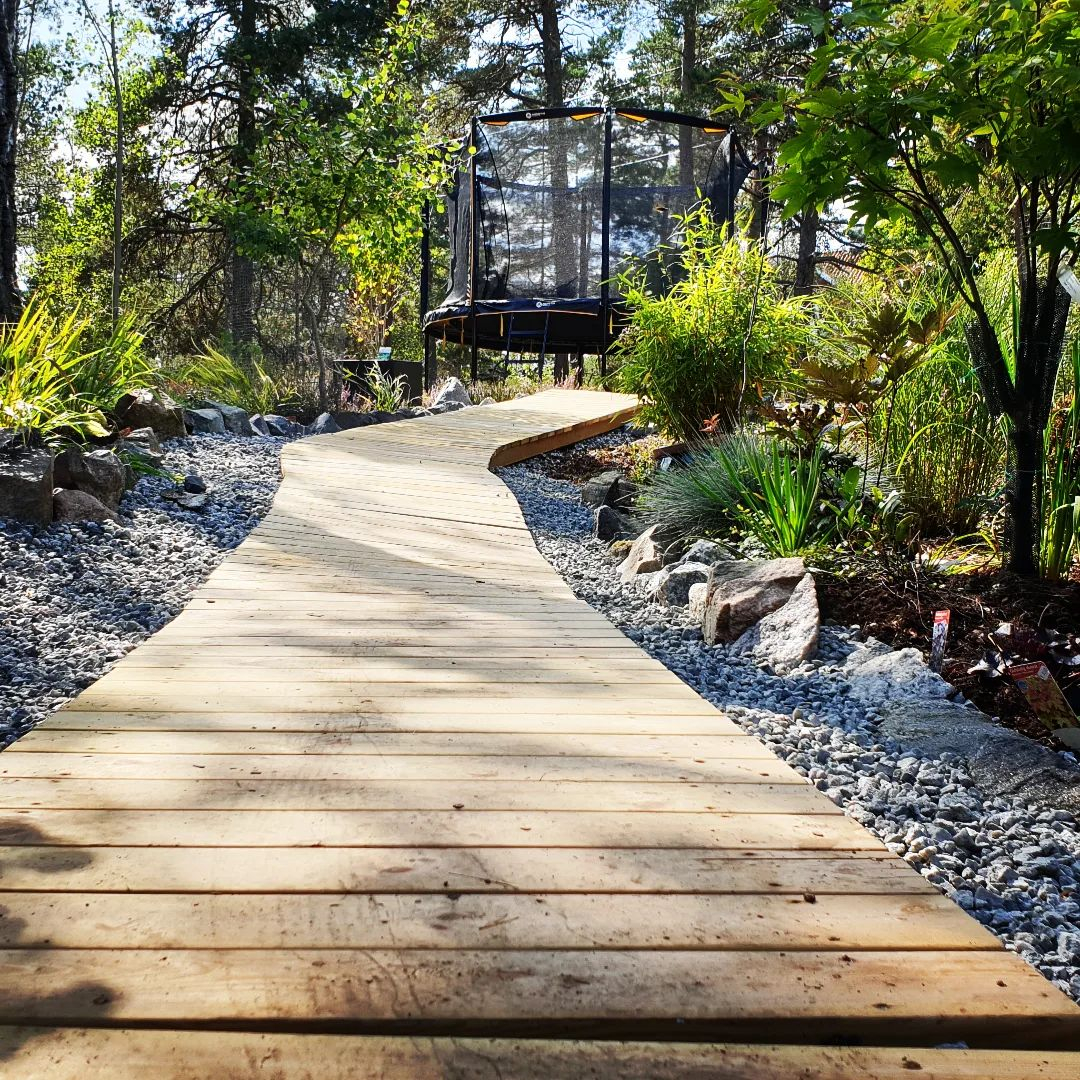
Opt for wood plank materials for the garden pathway, which offers a natural and rustic look that complements the outdoor environment. Additionally, wood planks are durable and easy to maintain, making them a practical choice for long-lasting pathways in your garden. Wood plank pathways from @ourgardenofdelight
- Stepping Stones: For a whimsical, casual approach, stepping stones offer flexibility in layout and are a great choice for smaller, secondary paths. They can be set on gravel or soil and allow surrounding plants to grow around them, creating a lush, integrated look.

Surrounding stepping stone pathways with grasses can create a natural and inviting garden aesthetic. This landscaping technique can also help define the pathways and prevent erosion of the soil. Stepping stones from @brook_cottage_
- Mulch Pathways: Mulch pathways, made from organic materials like bark or wood chips, are environmentally friendly and easy to install. They work especially well in gardens with naturalistic or woodland designs. However, mulch may need to be replenished over time as it breaks down.
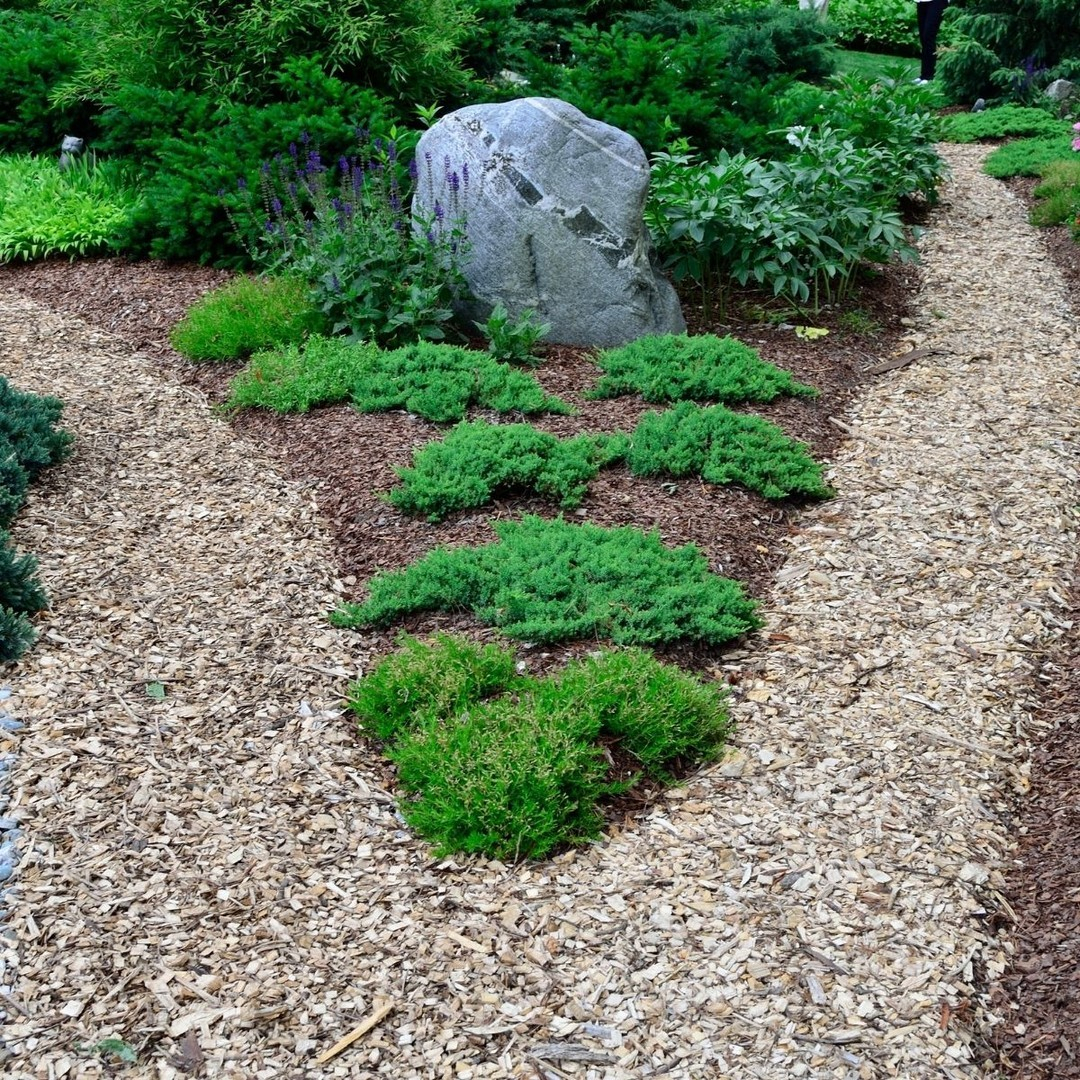
Creating mulch pathways with bark is a great way to add a natural and rustic touch to your garden. Not only does it provide a visually appealing walkway, but it also helps retain moisture in the soil and suppresses weed growth. Mulch pathway from @ficksupply
Designing with Pathway Shapes and Patterns
The shape and layout of your pathway play a significant role in defining the garden’s character. Here are some ideas to consider:
- Straight Pathways: Straight pathways are ideal for formal or modern gardens. They create a sense of order and can lead the eye to specific focal points like a statue, water feature, or patio. Straight lines work well in gardens with symmetrical designs and are particularly suited for properties with an orderly layout.
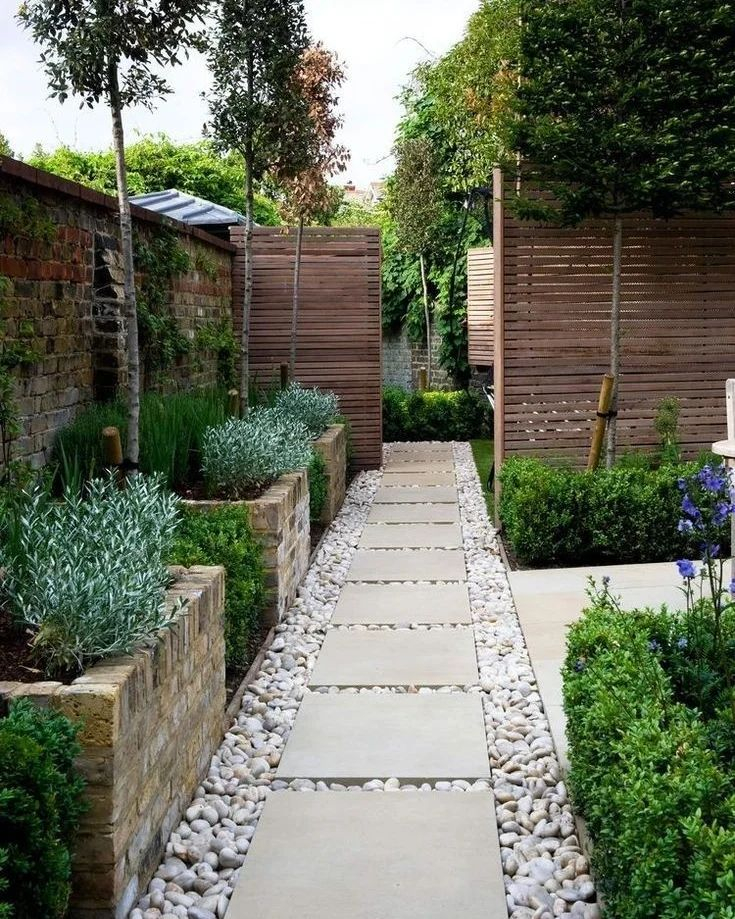
Straight garden pathway designs will make your outdoor space feel more organized and visually appealing. Straight garden pathway from @theblissfulhomeco
- Curved Pathways: Curved pathways introduce a more organic, meandering feel that works well in cottage or naturalistic gardens. Curves add mystery and invite exploration, often encouraging visitors to take their time as they follow the gentle twists and turns. This design works well when lined with lush greenery or flower beds.
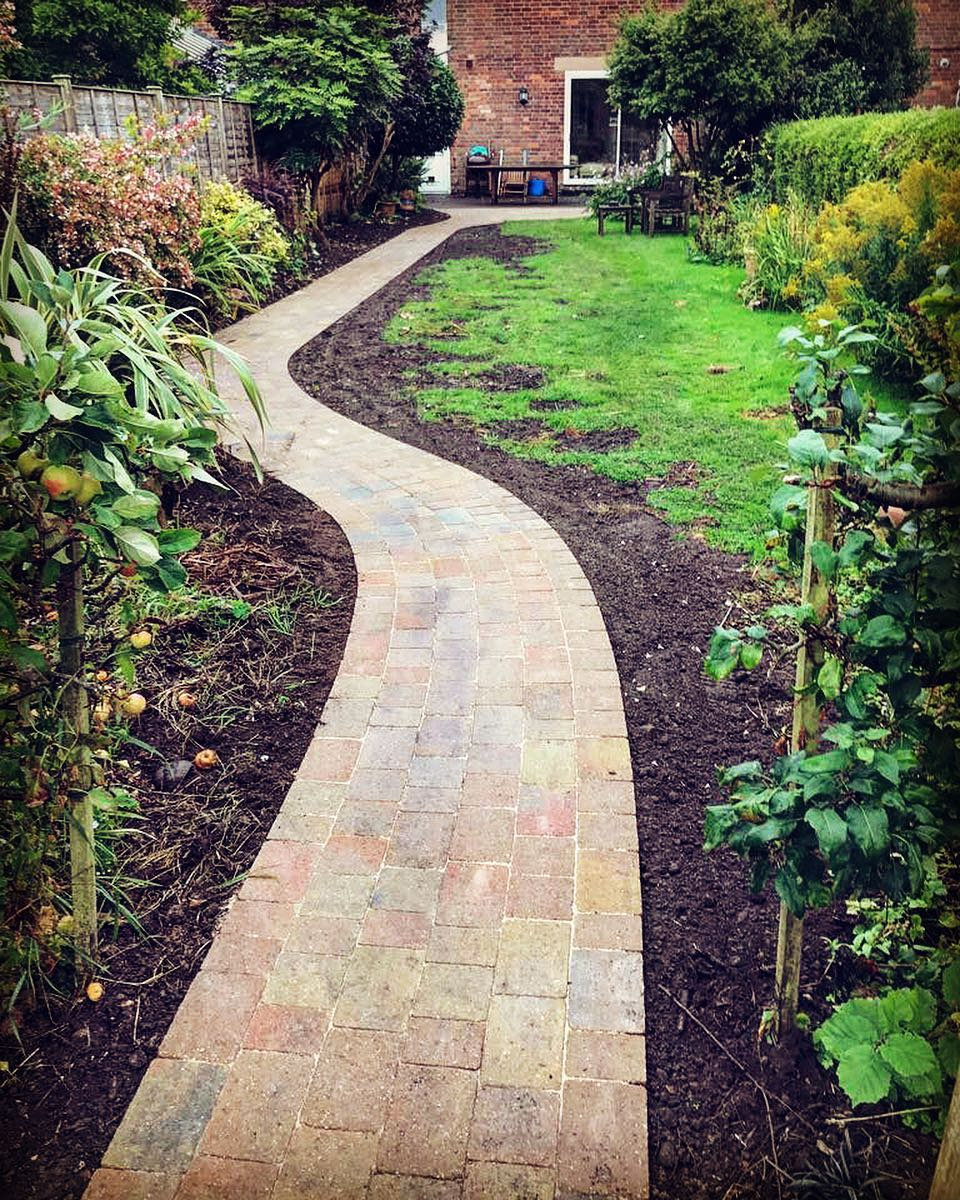
Curved pathways create a sense of mystery and intrigue in your garden. These pathways can lead you on a journey through your outdoor space. Curved pathways from @levelslandscapingwarwickshire
- Patterned Arrangements: For materials like bricks or tiles, incorporating a pattern (e.g., herringbone, basket weave) adds texture and visual interest. Patterns are especially effective in spaces with limited foliage, as they create a striking focal point.

Arranging the brick pathway design in herringbone patterns adds a unique and visually appealing element to the landscape. This pattern also helps to create a sense of movement and flow within the space. Herringbone patterns from @leenahoniglove
Adding Edging
Pathway edging serves both functional and aesthetic purposes, helping to keep pathway materials in place while adding a polished look. Here are some effective edging options:
- Brick or Stone Edging: For a cohesive look, consider using bricks or stones that match or complement the primary pathway material. Brick edging provides a classic appearance, while stone offers a rustic feel.

Using bricks for the garden pathway edging can provide a durable and classic look to your outdoor space. Additionally, bricks can easily be arranged in different patterns to create a unique design for your garden pathway. Brick edging from @simonhall.gardens
- Metal or Plastic Edging: Metal edging, particularly in black or dark tones, gives pathways a sleek, modern edge. It’s unobtrusive and helps define the pathway without drawing attention away from the garden. Plastic edging is also an option, though it’s less durable than metal.
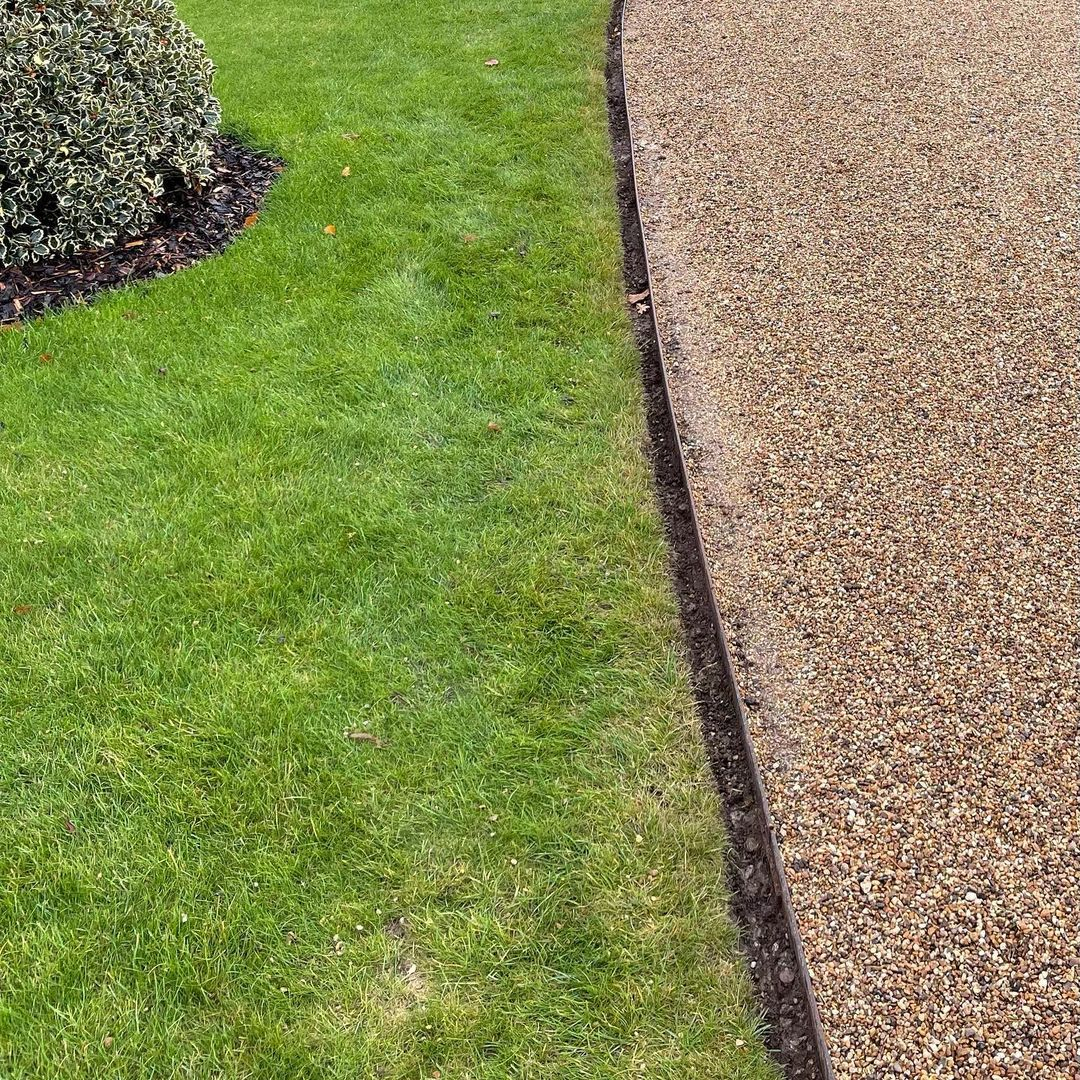
The metal pathway edge provides a sleek and modern look to any outdoor space. It also adds a touch of sophistication and durability, making it a long-lasting and stylish choice for defining walkways or garden borders. Metal edging from @bk_gardening_services
- Natural Borders: Using low-growing plants like thyme or ground covers along the edges can create a natural boundary. This option works well in more informal gardens where a relaxed look is desired.

Planting low plants like ground cover along this garden pathway can help to create a lush and visually appealing landscape. Additionally, it can also help to prevent erosion and control weeds in the area. Natural edging and border from @girlfromplanet276
Landscaping Tips to Complement Your Pathway
Once the pathway is in place, thoughtful landscaping can further enhance its visual appeal. Here are a few landscaping tips:
- Enhancing Pathways with Lighting
Proper lighting not only makes pathways safer to navigate at night but also adds a magical ambiance to the garden. The right lighting fixtures can truly transform the outdoor space and create a cozy atmosphere for relaxing or entertaining. You can opt for solar light, in-ground lighting, or lantern or pole lighting.

Adding solar lights along the garden pathway not only enhances the aesthetic appeal of the space but also provides a practical lighting solution for nighttime navigation. The soft glow of the solar lights creates a warm and inviting atmosphere for evening strolls in the garden. Pathway lighting from @madiganridgefarm
- Adding Focal Points Along the Way
Strategically placing focal points, such as sculptures, birdbaths, bushes, flowers, or benches, along the pathway gives the garden more character. You can also mix among them, such as bushes, plants, and statues, to create a more dynamic and visually interesting space. These features add depth and interest, inviting visitors to pause and appreciate the surroundings.
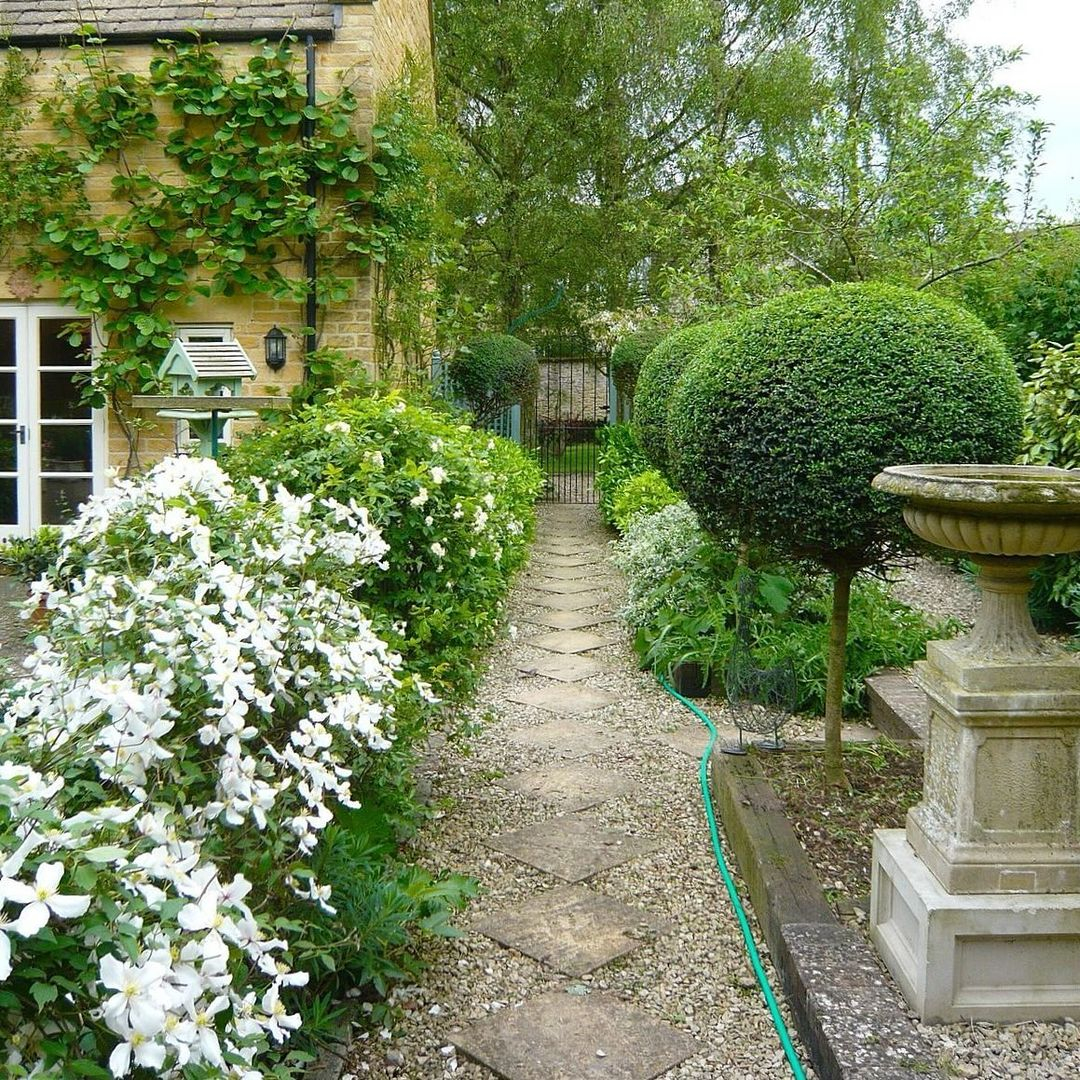
Flowers, bushes, and the addition of a birdbath along this garden pathway add a focal point and enhance the overall aesthetic appeal of the outdoor space. The variety of colors and textures creates a visually pleasing and inviting atmosphere. Garden pathway decor from @aplaceofgardeninspiration
Practical Tips for Garden Pathway Maintenance
Keeping your garden pathway in good condition ensures it remains both attractive and functional. Here are some maintenance tips to consider:
- Regular Cleaning: Leaves, dirt, and other debris can accumulate on pathways, making them slippery and unsightly. Regular sweeping or hosing down can help keep them clean.
- Preventing Weed Growth: Weeds can quickly make a pathway look untidy. Applying a weed barrier underneath gravel or stone paths can help prevent weed growth. For existing paths, use mulch or sand to fill in gaps where weeds tend to grow.
- Repairing Wear and Tear: Over time, pathways can develop cracks or shifts, especially in areas with heavy foot traffic. Regular inspections and minor repairs, like re-leveling stones or adding more gravel, can prolong the life of your pathway.


